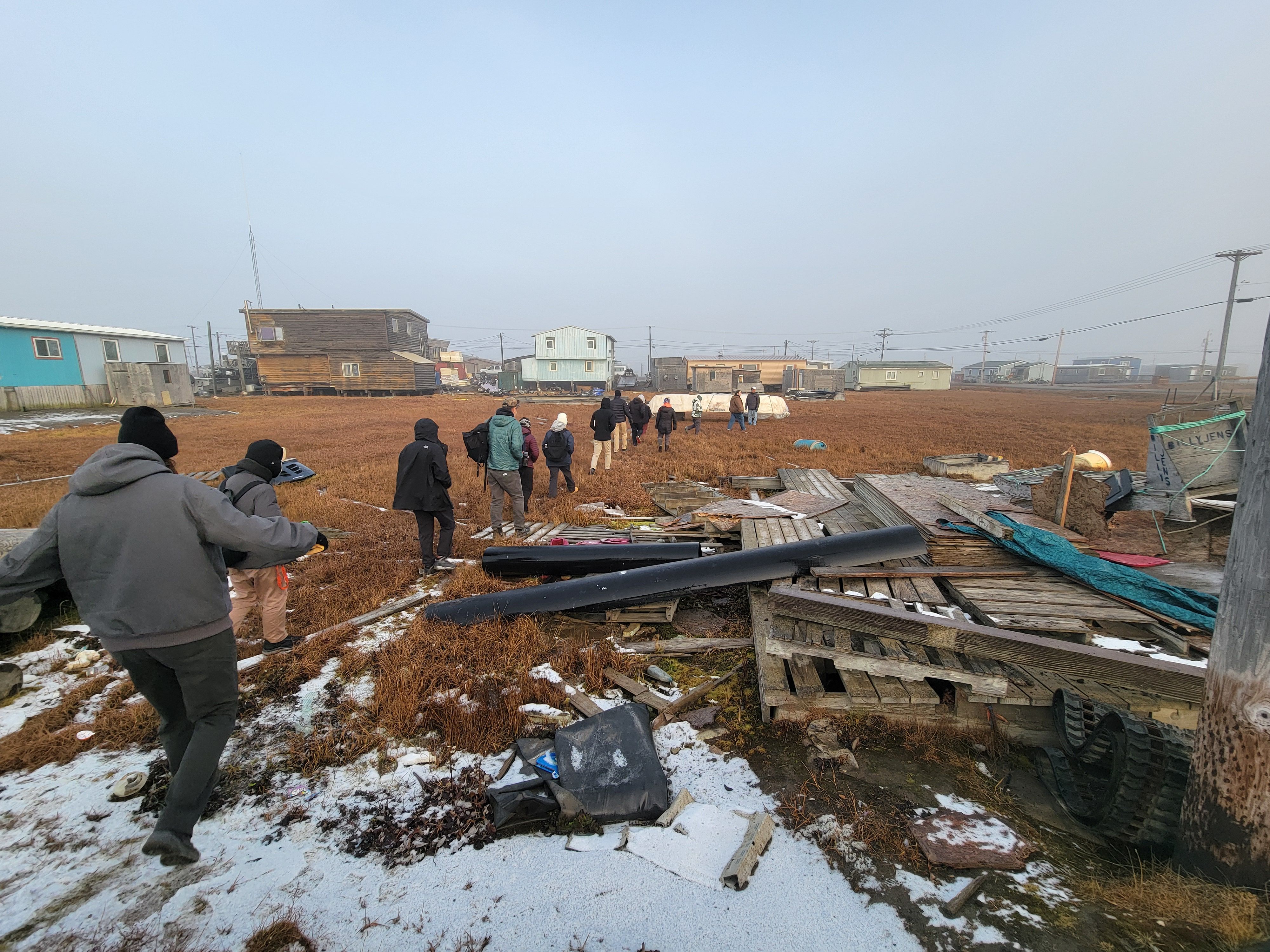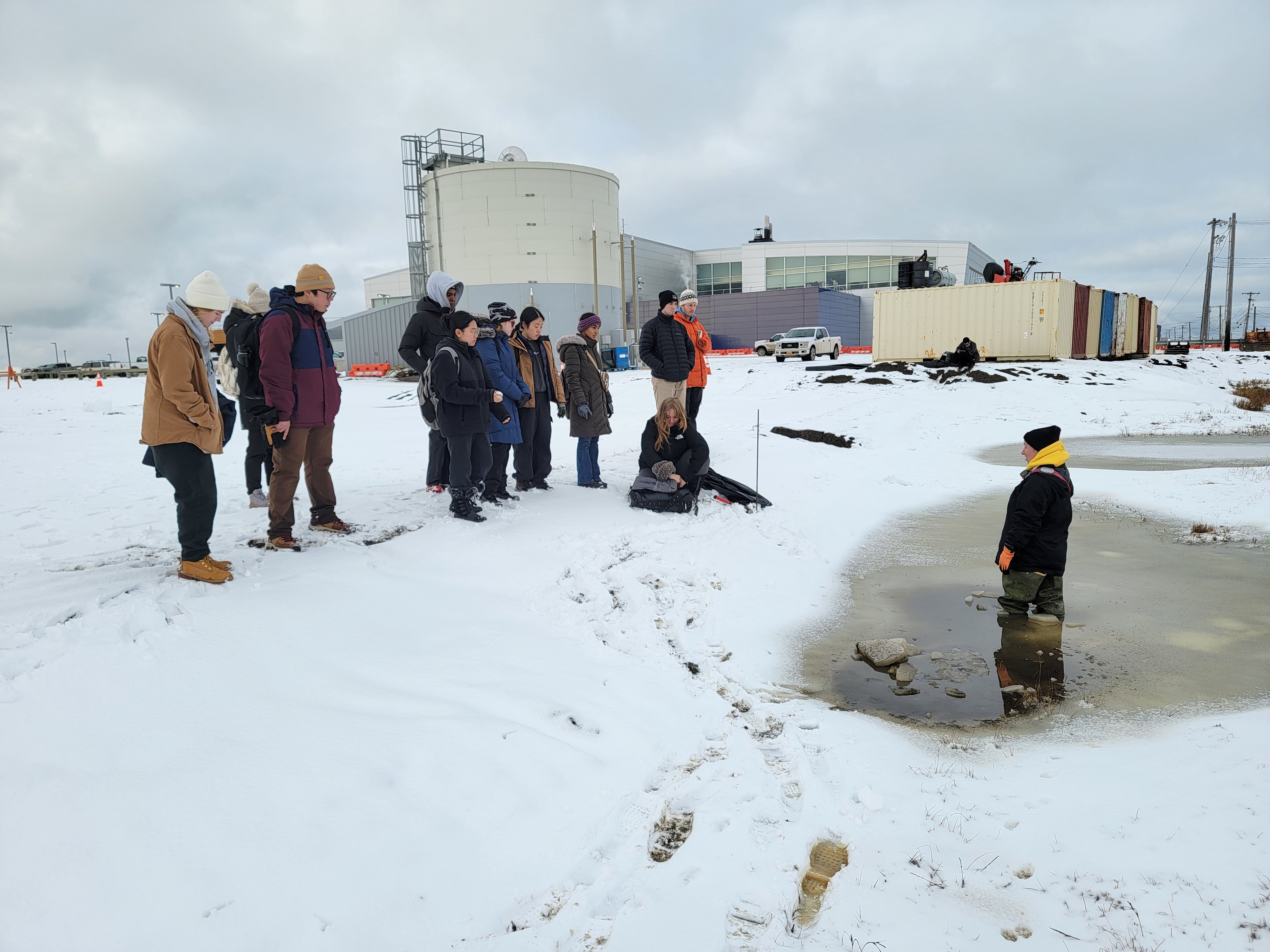Life at the Top: Climate Change in Utqiaġvik, Alaska


 Leena Cho, Associate Professor, University of Virginia School of Architecture; Matthew Jull, Associate Professor, University of Virginia School of Architecture; Katherine Shi, Research Assistant, Arctic Design Group, University of Virginia
Leena Cho, Associate Professor, University of Virginia School of Architecture; Matthew Jull, Associate Professor, University of Virginia School of Architecture; Katherine Shi, Research Assistant, Arctic Design Group, University of Virginia
Nestled at the top of the world, Utqiaġvik, Alaska—the northernmost city in the U.S.—offers a glimpse into Arctic life. Houses stand on pile foundations, ATVs traverse the network of gravel roads, and front yards hold action packers, home maintenance supplies, and materials for subsistence hunting—necessities in such a remote environment. Formerly known as Barrow, Utqiaġvik is where the Arctic tundra meets the resilience of the Iñupiat people, who have lived here for centuries in one of the planet’s harshest climates.

The Arctic is changing faster than any other region, with temperatures rising at four times the global average. In just the past two years, Utqiaġvik has experienced record-breaking highs—July temperatures reaching 23°C (15°C above normal) and winter means of 4.5°C (20°C above normal)—as well as increased rainfall and snowfall, despite its classification as an Arctic desert. One of the most pressing consequences of these shifts is thawing permafrost. Extending beneath the tundra to depths of up to a mile, permafrost consists of ground that has remained frozen for at least two consecutive years—or even hundreds of thousands of years.
Arctic communities' stability is directly tied to permafrost conditions. When it thaws, the impacts are severe: foundation failures, coastline erosion, contaminant release, and disruptions to subsistence practices. How can remote Alaskan communities like Utqiaġvik adapt to these changes affecting the environment, infrastructure, and cultural traditions?
Arctic Design Group Studio
This question is at the core of the Arctic Design Group (ADG) studio, School of Architecture, University of Virginia. ADG studio builds on over a decade of Arctic-focused design studios and represents the second iteration of National Science Foundation-sponsored research by the UVA Arctic Research Center (UVA-ARC) team. As part of the “Navigating the New Arctic” initiative, the studio examines critical issues identified by community partners to inform design, planning, and maintenance decisions. To support Arctic cities in making these key decisions, the project has developed and deployed a sensor network that collects continuous environmental data over a five-year period in both terrestrial and aquatic locations within Utqiaġvik.
The project’s education component further provides training opportunities for undergraduate and graduate students, postdoctoral scholars, and community members in Utqiaġvik.
Students in the Arctic
Like most architecture and landscape architecture studios at UVA, students engage in site research, analysis, and design iteration, presenting proposals through a series of reviews. However, unlike most studios, this course integrates research methodologies such as environmental predictive modeling, remote sensing analysis of satellite imagery, and fieldwork, including a most recent studio trip to Utqiaġvik in Fall 2024 for ground-truthing environmental data and to meet and learn from community stakeholders.

Over the course of a week, students—both undergraduate and graduate—immersed themselves in Arctic life, working in teams to explore topics ranging from housing and urban design challenges to snow and meltwater regulation. Each day, they visited and surveyed key research sites, met with project partners—including the North Slope Borough (NSB), Tagiugmiullu Nunamiullu Housing Authority (TNHA), Arctic Slope Native Association (ASNA), City of Utqiaġvik (COU), and Barrow Utilities and Electric Cooperative, Inc. (BUECI)—to discuss ongoing challenges and explore how data and design can inform future decision-making.
Conversations with TNHA revealed the difficulties of building in the Arctic, where Lower 48 housing typologies—despite their unsuitability for Arctic conditions—are often used due to cost constraints and a limited local labor force. Discussions with Public Works shed light on the labor-intensive and costly process of maintaining the gravel road system, including the routine of watering roads to control airborne dust for health reasons. Even waste management was examined, with a visit to the landfill highlighting the logistical challenges of disposal in an environment with harsh weather, extreme remoteness, and limited infrastructure and funding for operations and maintenance.
Back at UVA, students synthesized these findings into their final projects and presented them to the same stakeholders they met during the trip. Proposals included a master plan for new neighborhood development, a design for a recycling facility, a snow and meltwater management strategy, road dust mitigation techniques, and new housing prototypes better suited to the Iñupiat way of life.
Building on this work, future ADG studios are planned to bring students to the Arctic to continue to address pressing environmental and infrastructure challenges through interdisciplinary research and design.

- Testing, Diagnosing, and Treating Primary Aldosteronism: A Leading Cause of Hard-to-Treat Hypertension
- Life at the Top: Climate Change in Utqiaġvik, Alaska
- The Only Thing We Have to Fear is Fear Itself
- UVA Club of Tidewater: Hoos at Harbor Park
- UVA Club of Washington, DC: Diplomacy & Dialogue with Ambassador Mull
- Virginia Club of New York: Birdwatching in Central Park